A simple carrot cake with a sweet glaze, walnuts and cream cheese icing. It's straightforward to make, keeps well for a few days and can be frozen. We especially love it for Easter, Mother's Day and Spring brunches.
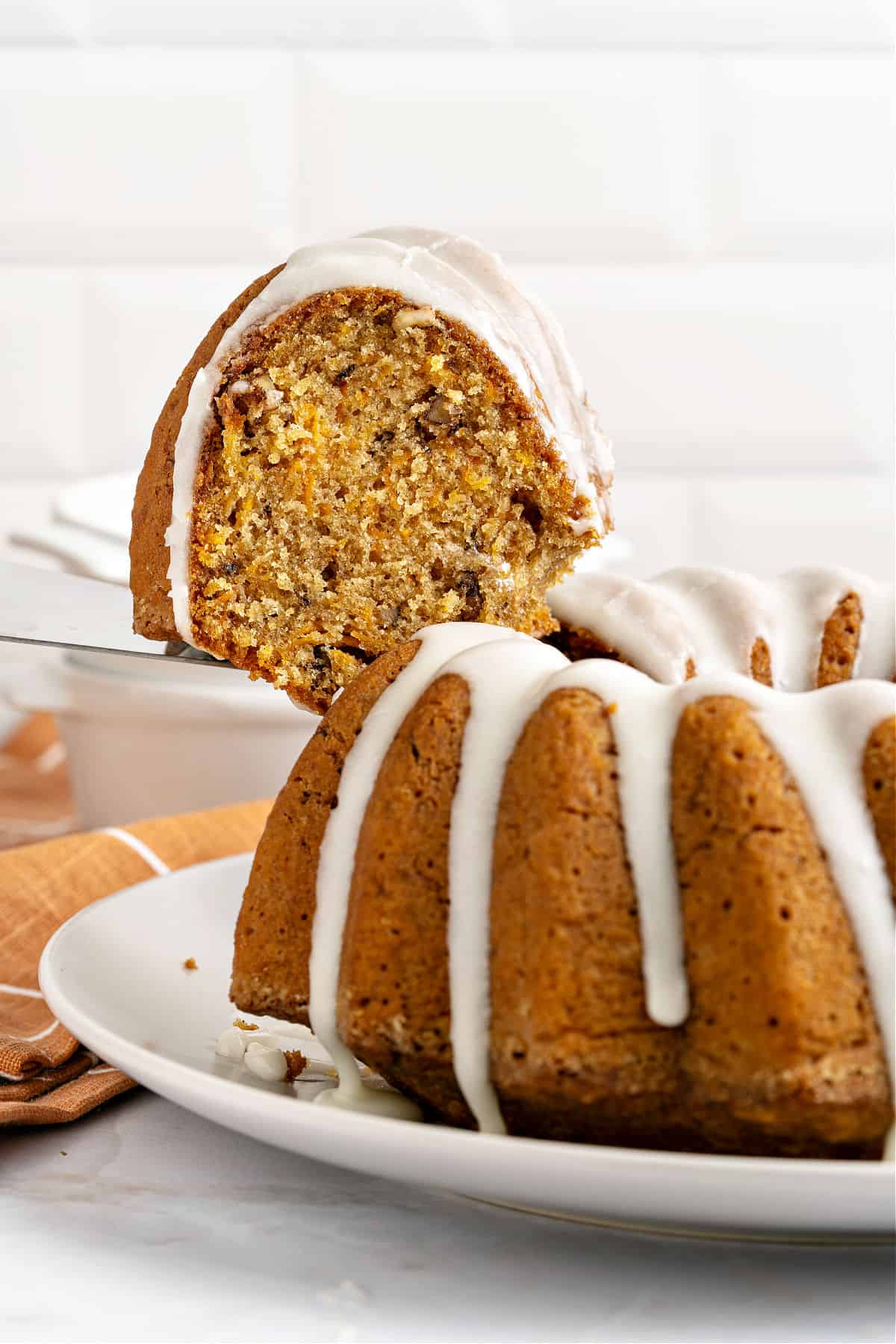
Old-fashioned cake
You might think you don't need another carrot cake recipe. Let me disagree. This recipe is what we might label a plain cake, especially compared to the popular carrot cake with ginger or the handsome celebration carrot cake (with apples and frosting).
There are no bells and whistles, except a wonderful crumb and spiced carrot flavor with walnuts (an optional ingredient), and that's where its beauty resides. And a finger-licking glaze that should not be overlooked.
The bundt pan makes it beautiful for brunch tables, especially for weekends. It also travels well, or at least better than the others.
All in all, a simple recipe that's worth making.
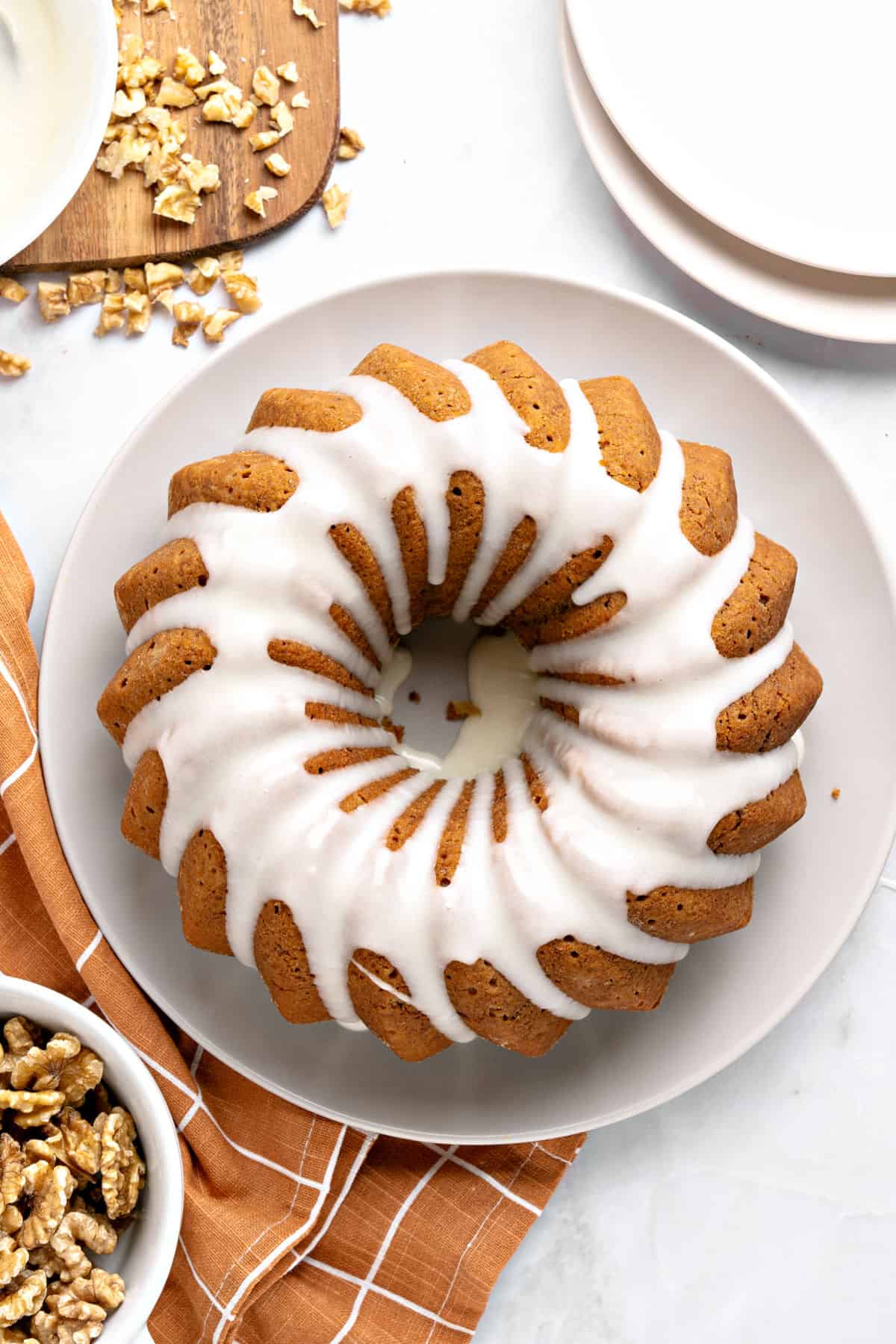
Ingredient Notes
Quantities are listed on the recipe card towards the end of this post. The Ingredients page has more details and lists the brands I use.
- Carrots: They can be shredded or grated with a large-holed grater (thin-holed ones can create a clumpy mess, so I don't recommend it). Do so at the last moment so they don't start to release liquid.
- Baking powder and baking soda: Make sure they aren't expired.
- Oil: It's used for the batter. Any vegetable oil works, though my go-to is sunflower oil.
- Powdered sugar: Also known as icing or confectioners' sugar.
- Nutmeg: It's optional, so don't buy it especially for this cake. It's great with just cinnamon.
- Walnuts: These are optional if you want a plainer cake, but they add moisture and crunchiness. Pecans also work.
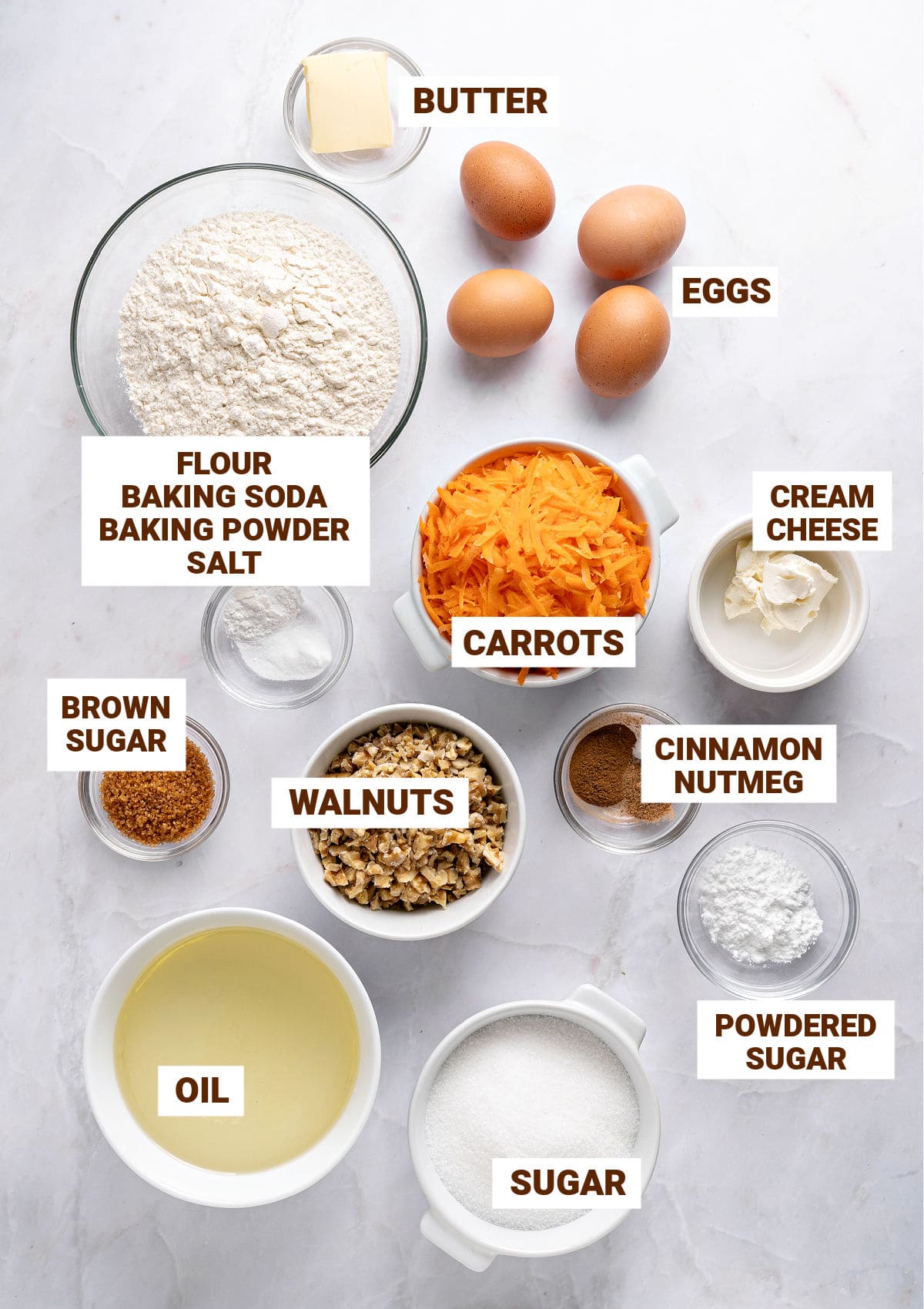
Preparing the bundt pan
If you bake bundt cakes often, you've likely had one stick to the pan. It's frustrating-but preventable. Here are three reliable methods:
- Shortening and flour: Coat the pan thoroughly with soft shortening using your fingers or a brush, making sure to reach every corner, including the center tube. Dust with flour, rotating the pan to cover evenly, then tap out the excess over the sink.
- Cake goop (pan-release paste): Mix equal parts shortening, flour, and oil into a paste. Brush it onto the pan. Store leftovers in a jar-1 month at room temp or up to 3 months in the fridge. This is one of my favorite methods.
- Baking spray with flour: Only use baking spray that includes flour. Regular cooking spray isn't enough and often leads to sticking. I rarely use this anymore.
The recipe matters too: When I find a bundt cake that releases cleanly, even without perfect prep, I hold onto it-it's a keeper.
Steps to make carrot bundt cake
Bundt cake pans I use: Though I tried numerous bundt cake pans with different patterns, I now gravitate toward simple ones without intricate patterns. The cakes look plainer but are easier to remove, which is a big plus for me. The Nordic Ware elegant party bundt is my latest favorite, and the classic fluted bundt pan will always have a place in my kitchen.
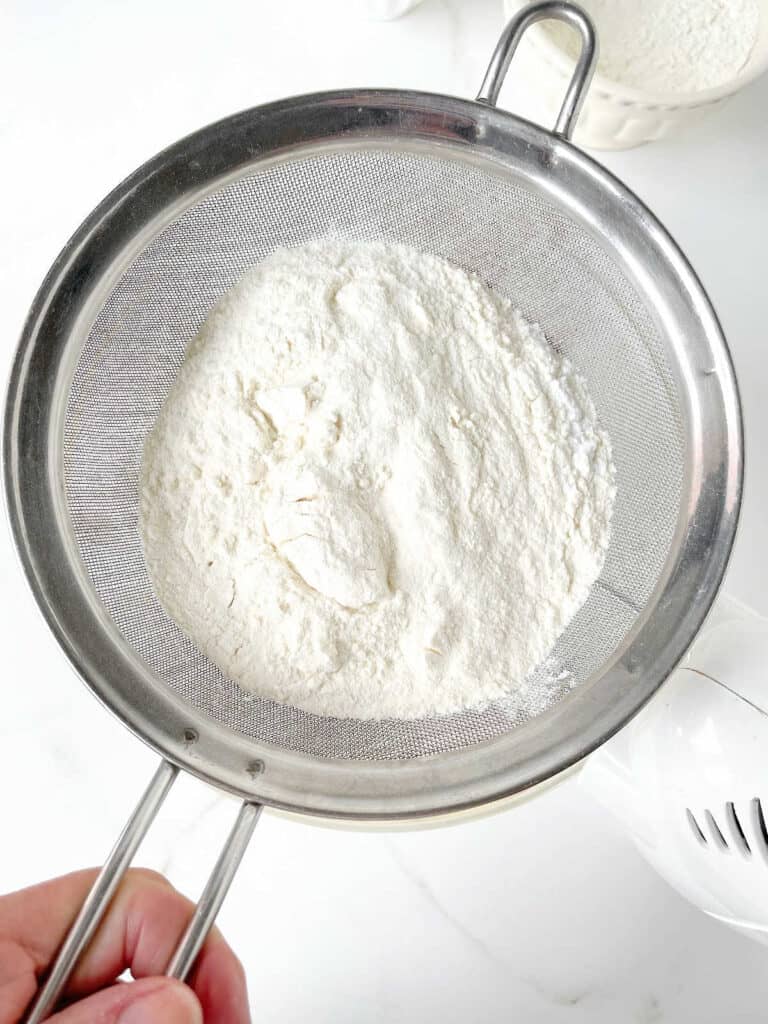
Sifting
The flour mixture has to be sifted to avoid impurities or clumped ingredients.
I have them measured and sift them directly over the batter, but you can sift them in another bowl first.
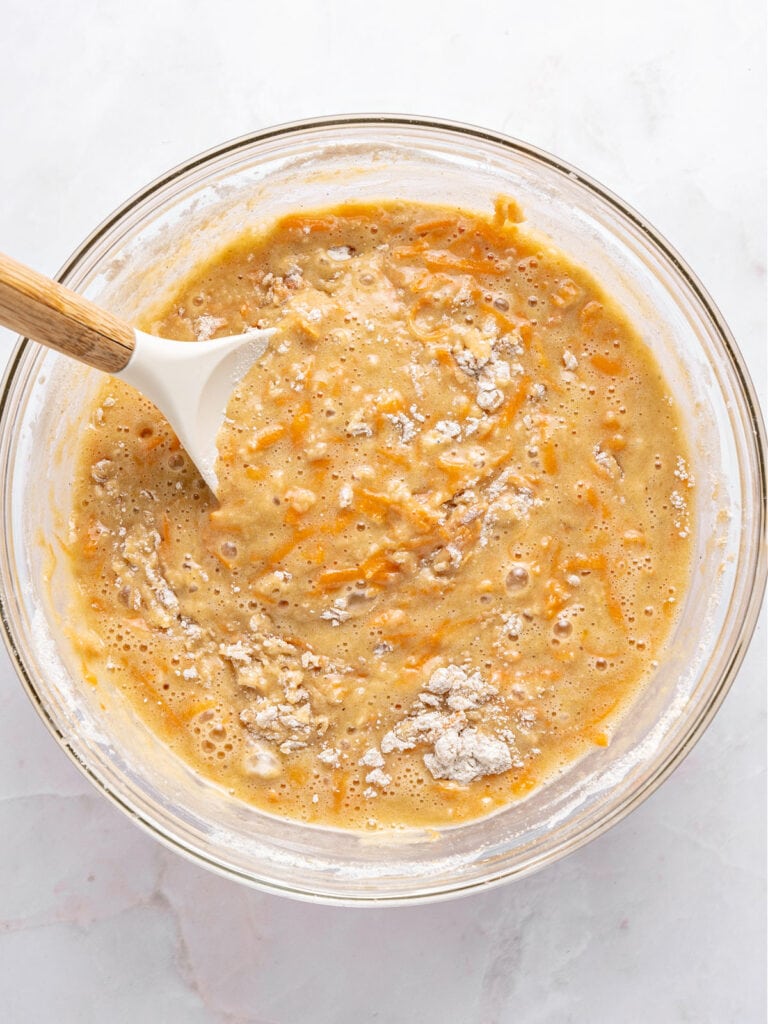
Carrots
Grate or shred them at the last minute using a large-holed grater. Small-holed ones tend to clump the carrots and make it hard to incorporate them.

Cake batter
Bundt pans should not be filled more than ¾ of their capacity to avoid overflowing and allow the cake to bake well.
I favor simple patterns as there's less chance of the batter sticking.
Baking a bundt cake
- Use the right-sized pan: this is important to avoid overflow and for the cake to fully bake in the estimated time. Though there can be variations due to ovens and pan materials, make sure the size is right and it's not filled more than ¾ of its capacity.
- Cracked top: this is to be expected, so don't think there's something wrong if you're new to bundt cakes.
- Removing the cake from the pan: let it cool for 15 minutes, put a wire rack or plate covering the pan and carefully flip it over. The cake should release easily if the pan is well-greased. When you find a pan and a greasing method that works like a charm for you, don't let it go.
- Use a brochette stick or cake tester: place it in the middle of the batter. It should come out clean, with no crumbs or wet batter attached.
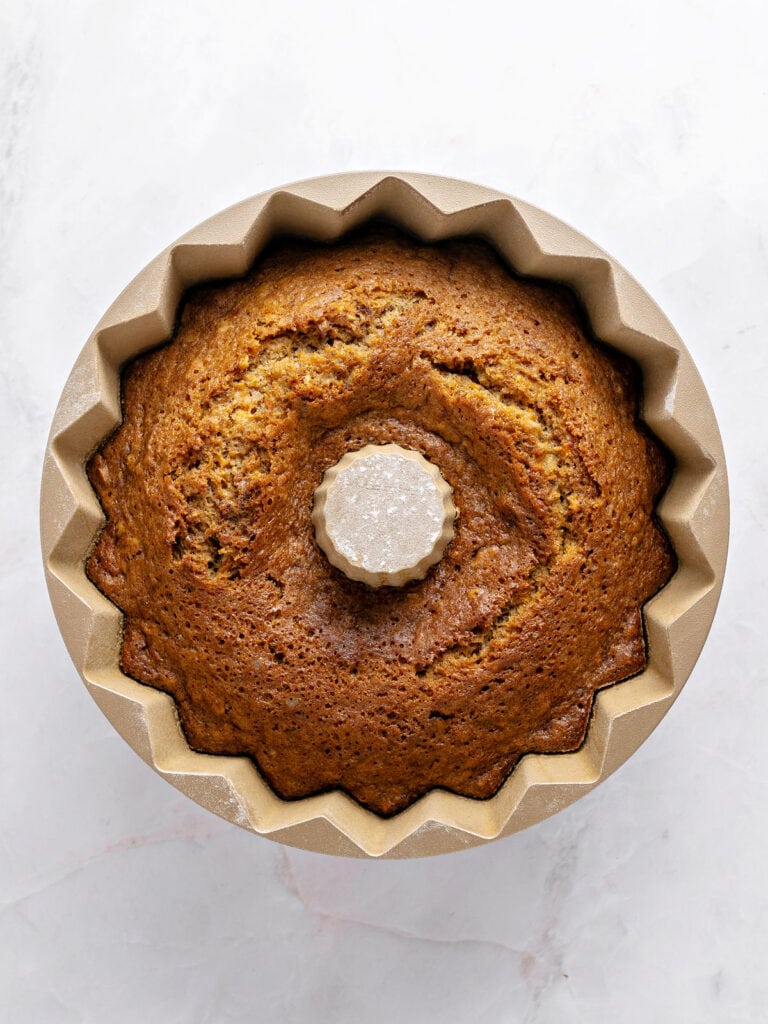
Baking
It will puff and then shrink a little as it cools down.
I wait about 20 minutes to remove it from the pan, but first, I check that the sides and center tube are not sticking (I use a smooth-bladed knife). Then, I flip it carefully as the cake is still tender and warm.
Glazing
There's no right or wrong way of glazing a bundt cake; it depends on how you want it. For this bundt cake, we used a pretty runny glaze.
How thick should it be? You can adjust how much it will run down the sides of the bundt cake by using more or less liquid. A thick glaze will look like the one on the zucchini bundt cake, where it doesn't drip all the way down. A thinner glaze will cover more surface, like in this sweet potato cake.
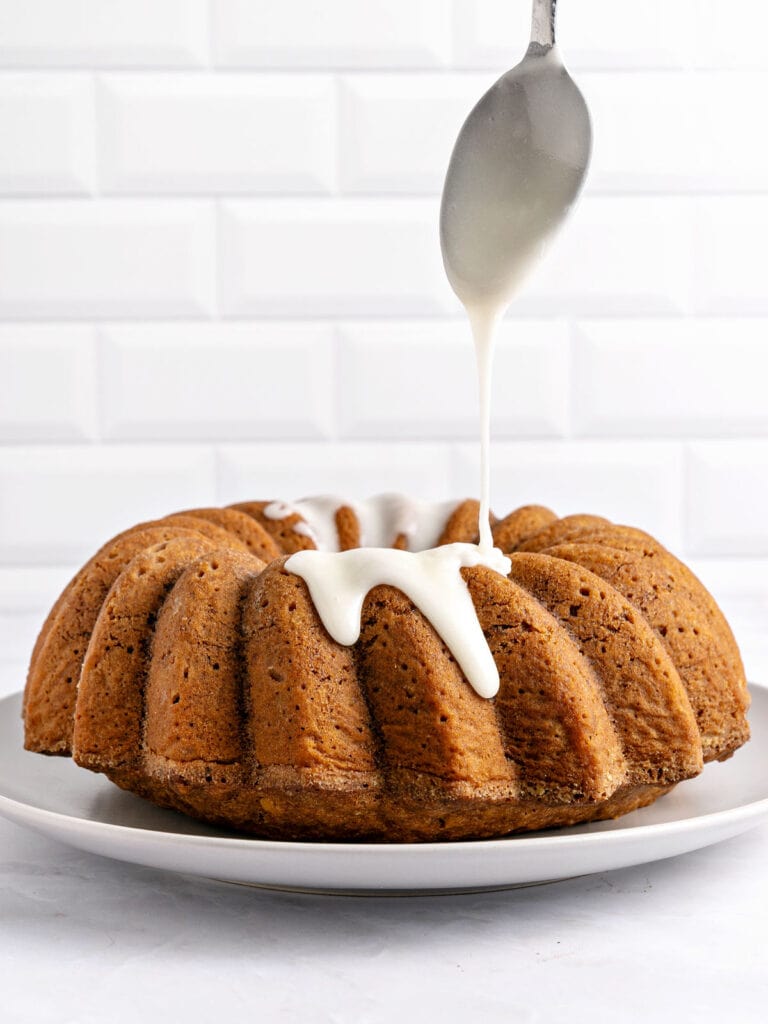
Cream cheese glaze
It's a simple powdered sugar glaze with cream cheese. It's thick, pourable and rich.
The cake must be completely cooled down before you drizzle the glaze.
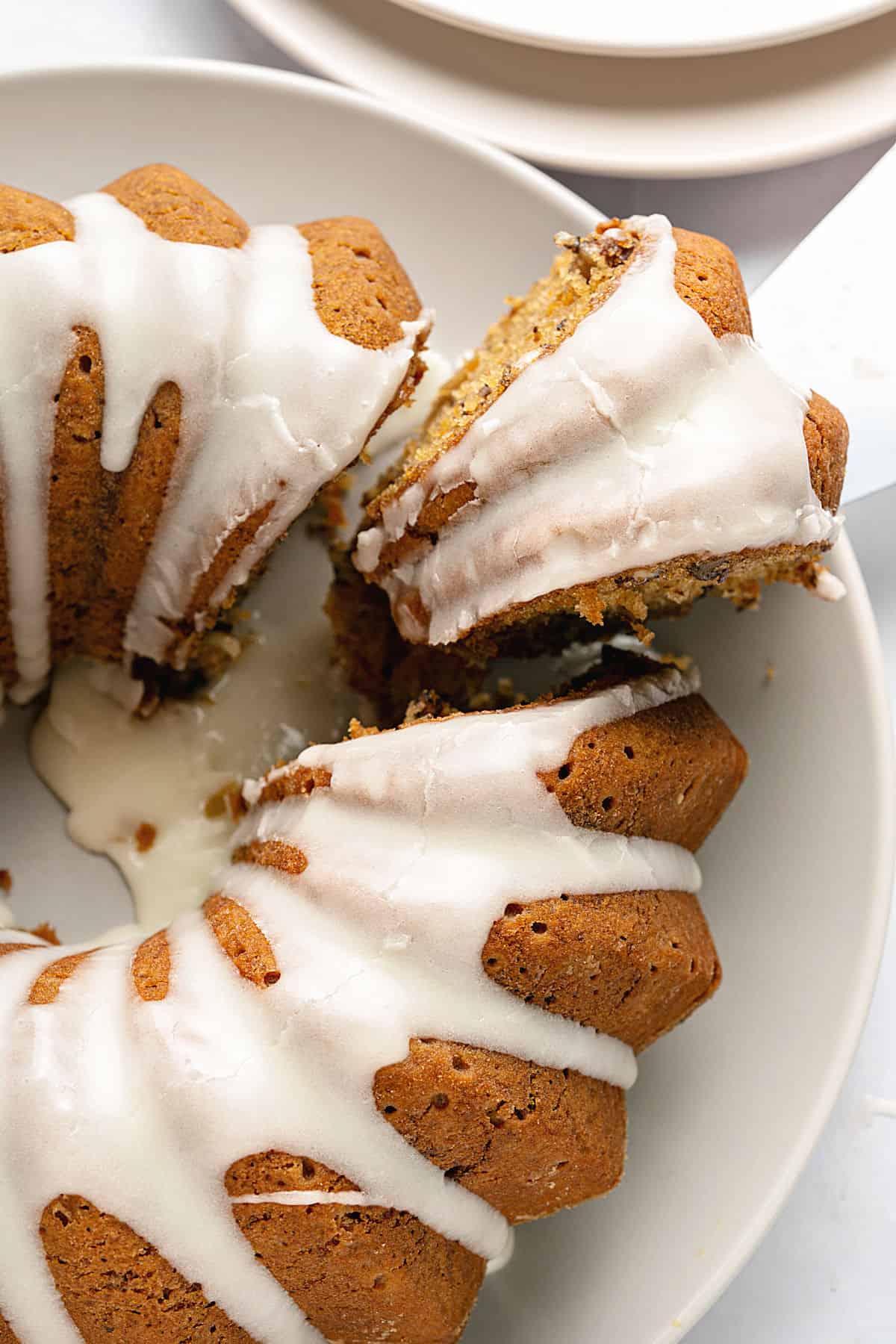
Storage
- Cool completely: do this on a wire rack before storing. This helps prevent condensation, which can make the cake soggy.
- Wrap or cover: use plastic wrap, aluminum foil or an airtight container. This helps preserve moisture and prevents the cake from drying out.
- Room temperature: for short-term storage (1-2 days), you can keep the wrapped cake at room temperature. However, refrigeration is recommended to maintain freshness if the climate is hot or humid, though it tends to clump the crumb a little. I'd rather freeze it.
- Freezing: for longer storage, this cake freezes well. Wrap it tightly in plastic and then foil or place it in a freezer-safe bag or container. Thaw in the refrigerator before serving.
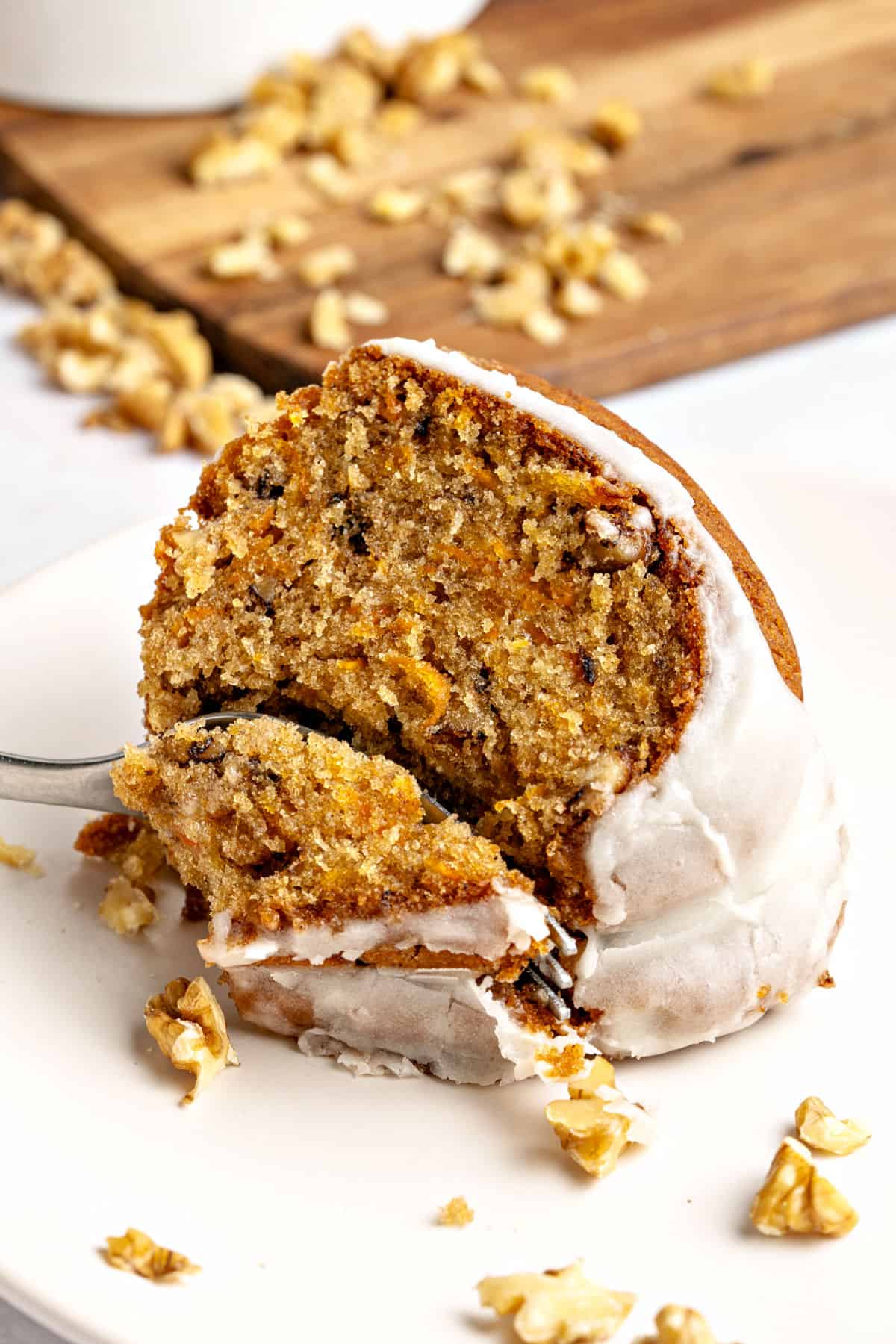
More carrot recipes you might like:
If you made this recipe and loved it, you can comment below and leave a 5-star ⭐️ review. Also, if you had issues, let me know so we can troubleshoot together.
You can also subscribe to our FREE email series 'Baking the Best' and our regular newsletter. Or follow and save my recipes on Pinterest.
As an Amazon Associate, I earn from qualifying purchases. Read my disclosure policy.
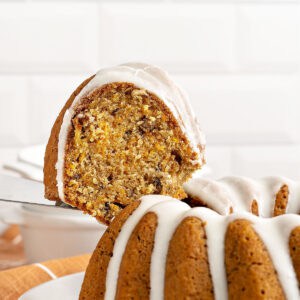
Carrot Bundt Cake with Cream Cheese Glaze
Ingredients
Carrot cake:
- 2 cups all-purpose flour
- 1 teaspoon ground cinnamon
- pinch of ground nutmeg, optional
- 1 teaspoon baking powder
- ½ teaspoon baking soda
- ½ teaspoon salt
- 4 eggs, at room temperature
- 1 cup sugar
- 2 tablespoons brown sugar
- 1 ¼ cups sunflower oil
- 2 cups grated carrots
- 1 cup chopped walnuts, optional. I like them for crunch and moistness.
Cream cheese glaze:
- 1 tablespoon unsalted butter, at room temperature
- 2 tablespoons regular cream cheese, at room temperature
- 1 cup powdered sugar
- 1 or 2 teaspoons cream or milk to thin, if necessary
Instructions
For the cake:
- Preheat the oven to 350ºF (180°C). Grease a 10 or 12-cup bundt cake pan with soft shortening and lightly flour it, shaking off excess. Or use baking spray that has flour in it.
- Sift 2 cups all-purpose flour, 1 teaspoon ground cinnamon, pinch of ground nutmeg, 1 teaspoon baking powder, ½ teaspoon baking soda and ½ teaspoon salt. Reserve.
- Beat 4 eggs with 1 cup sugar and 2 tablespoons brown sugar in a large bowl for 1 minute. It should be foamy and well incorporated but not doubled or meringue-like.
- Gradually add 1 ¼ cups sunflower oil and beat until incorporated and fluffy, about 2 minutes.
- Fold in 2 cups grated carrots.
- Add the sifted dry ingredients in two parts, mixing with a spatula or whisk until well incorporated and lump-free. Don't beat at this point or the cake crumb will not be as soft. Fold in 1 cup chopped walnuts, if using. Don't overmix.
- Pour into the prepared bundt pan and bake for about 45-50 minutes, or until a cake tester or toothpick comes out clean.
- Let cool on a wire rack for about 15 minutes and remove from the pan onto a wire rack to cool completely before glazing.
For the cream cheese glaze:
- Beat together 1 tablespoon unsalted butter and 2 tablespoons regular cream cheese in a medium bowl until creamy and no lumps remain.
- Add 1 cup powdered sugar and integrate well until very smooth. The amount of sugar depends on how thin or thick you want the glaze. Add 1 or 2 teaspoons cream or milk to thin, if needed. It should be thick but pourable.
- Drizzle over the cooled cake that has been put on a wire rack with a parchment paper underneath to catch any drips. Let it run down the sides and center of the cake. You can sprinkle additional chopped walnuts on top.

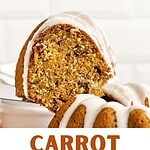

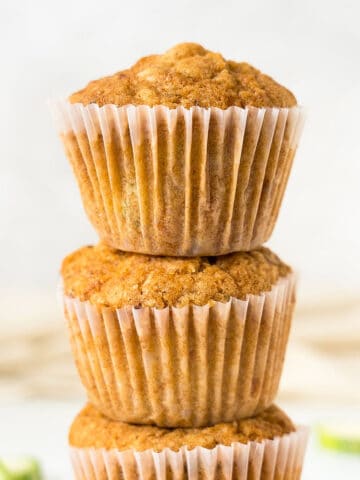
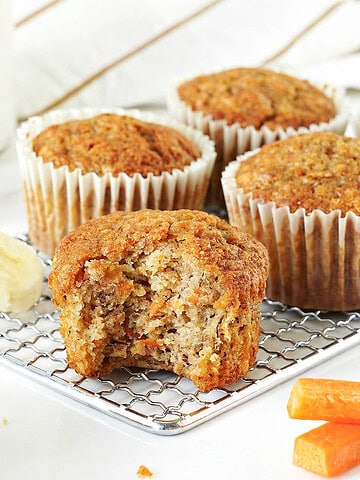
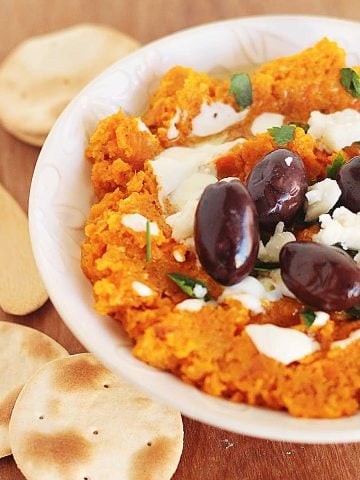
Di says
What oven temperature is best for this recipe?
Paula Montenegro says
Hi Di! It's 350°F (180°C).